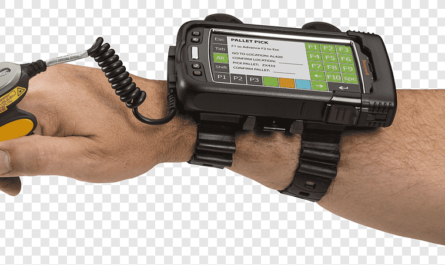What are BLE Beacons?
Bluetooth Low Energy (BLE) beacons, commonly referred to as just beacons, are small transmitters that broadcast their identifier to nearby Bluetooth-enabled devices. They use very little power – often needing only a small coin cell battery that can last from months to years. As the name suggests, BLE beacons use Bluetooth Low Energy wireless technology standards to transmit signals that can be picked up by compatible smartphones, tablets or other devices. This allows creation of proximity-based location awareness applications and geo-fencing capabilities.
How do BLE Beacons Work?
Understanding the basic functionality and components
All Bluetooth Low Energy (BLE) Beacon contain three key components – a Bluetooth radio, a microcontroller, and a battery. The microcontroller powers the radio and causes it to broadcast messages at regular intervals. These messages contain a universally unique identifier (UUID) and some additional information like the transmitter’s major and minor values. Nearby Bluetooth devices with a compatible mobile app installed can detect these messages and utilize the embedded identifiers.
The receiving device computes the received signal strength indicator (RSSI) value to estimate distance from the beacon. Closer proximity means a stronger RSSI reading. Mobile apps then use the UUID, major/minor values along with RSSI to determine precise location of the user within the deployed beacon infrastructure. While RSSI-based location is not extremely precise, it is adequate for proximity-based interactions and can be enhanced using additional beacons.
Proximity Marketing with BLE Beacons
Enabling new location-based experiences through messaging and contextual offers
One of the major uses of BLE beacons is for proximity-based customer engagement and digital signage applications. Retail stores deploy beacons throughout their premises to broadcast customized offers, messages or guides to shoppers based on their real-time location within the store. For example, ads and recommendations for items nearby can be pushed to shoppers’ phones. Beacons also support geo-fencing capabilities by triggering actions when a shopper enters or leaves an area.
Museums, art galleries, and convention centers use beacons for interactive wayfinding tours and content. Visitors can learn more about exhibits or events based on their current location. Large public venues like airports and shopping malls deploy beacons for navigation assistance, emergency notifications, loyalty programs and more. The goal is to deliver just-in-time, hyperlocal messaging to enhance the customer experience using their presence within a certain area.
Indoor Positioning Systems
Using distributed beacon constellations for accurate localization
Multiple beacons placed strategically can work together as an indoor positioning system (IPS) to provide more precise location detection than a single beacon. The receiving device computes TDoA (time difference of arrival) and AoA (angle of arrival) values from signals received from three or more fixed beacons to triangulate its current 2D or 3D coordinates. While complexity increases, distributed beacon deployments can achieve 1-3 meter accuracy ideal for applications like asset tracking within warehouses or hospitals.
Emergency responders can also benefit from indoor mapping using beacon-based IPS. First responders’ devices can pinpoint their colleague’s locations on a floor plan. Combining Bluetooth scanning with inertial sensors like compass, accelerometer on mobile devices further enhances accuracy. Multiple vendors offer turnkey beacon hardware, management software and development SDKs to set up seamless indoor positioning infrastructure.
IoT Integration Opportunities
Expanding connectivity through sensor integration and data collection
BLE beacons form the basis for numerous Internet of Things (IoT) use cases as well. Beyond basic location detection, beacons can be outfitted with additional sensors to achieve more versatile functionality. For instance, environmental sensors may be added to beacons to monitor conditions like temperature, humidity or carbon dioxide levels. Asset trackers tag shipment containers, tools or equipment with beacon modules for real-time visibility.
Integrating beacons with external switches, buttons or displays enables interactive control interfaces. The connectivity established via beacons also supports configuration, updates and data collection from linked sensors or controllers. Over-the-air firmware updates allow remote management of entire deployed beacon networks. Data gleaned from beacon-integrated IoT devices provides insights for predictive maintenance, process optimization and more.
Privacy Considerations for BLE Beacon Deployments
Best practices and permissions for responsible data usage
While powerful location platforms, beacon deployments must respect user privacy. Specific consent is needed to collect personal user data. Beacons should not transmit any identifiable user information like IDs or names without permission. Mobile apps accessing beacon signals must clearly communicate their data usage in privacy policies. Bluetooth scans and location access should only take place when the app is in the foreground. Data should be anonymized or not stored whenever possible.
Regulatory compliance is also vital – deployments may need approvals depending on location, user-tracking scope. Notifying users about beacon presence using clear signage builds transparency. Ability to opt-out of further messaging helps maintain consent. Ensuring minimal data retention and implementing security best practices around transmitted and stored data helps address privacy concerns surrounding beacon technology’s location awareness capabilities.
*Note:
1. Source: Coherent Market Insights, Public sources, Desk research
2. We have leveraged AI tools to mine information and compile it


